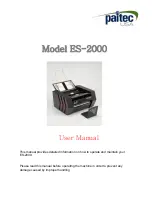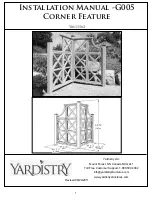
Section 3: Operating Procedures
MP10 & MP20 Moldboard Plows 307-244M
10/29/18
15
Operating Hints
Polish plow bottoms to remove rust with a sander before
going to the field to plow. Operate the sander in the
direction dirt flows over the bottom. A plow bottom can
also be polished by operating the plow in sandy soil.
When turning, leave enough space to allow for easy
turning. Avoid traveling over plowed soil as much as
possible. Never travel straight up or down plowed soil.
Rain water will run in tractor tracks creating newly cut
ditches in a freshly plowed field.
Avoid plowing square corners as much as possible. The
tractor tires will pack soil while making square turns.
Instead, shape square corners into wide rounding
corners. When a rounding corner become too tight for the
plow to throw dirt properly, reshape the corner.
Avoid deep plowing that brings clay subsoil to the surface
and mixes it with the top soil.
Adjust tractor draft control lever to hold the plow in the
ground except when loss of horsepower dictates that the
plow be raised a little. Shift to a lower gear if draft control
lever can not be adjusted properly. Refer to your tractor
Operator’s Manual for detailed instructions.
To help cover trash, try attaching 10 to 12 foot lengths of
#9 or #7 gauge wire just above the lower bend of the
coulter shank and slightly to the right of the coulter blade.
Weight may need to be added to the plow when plowing
in very hard ground. Do not add more than 75 lbs.
Transporting
WARNING
!
To avoid serious injury or death:
•
Select a safe ground speed when transporting. Never travel
at a speed which does not allow adequate control of steering
and stopping, and never exceed 20 mph (32.2 km/h) with
attached equipment. Rough terrain requires a slower speed.
•
When traveling on roadways, travel in such a way that
other vehicles may pass you safely. Use LED lights, clean
reflectors, and a slow moving vehicle sign that is visible
from the back to warn operators in other vehicles of your
presence. Always comply with all federal, state, and local
•
When traveling on public roadways, travel in such a way
that faster moving vehicles may pass safely. Use accessory
lights, clean reflectors, and a slow moving vehicle sign that
is visible from the back to warn operators in other vehicles
of your presence. Always comply with all federal, state, and
1.
Raise the plow to the highest position for transport.
2. Select a safe ground speed when transporting from
one area to another. Maximum transport speed for
the Moldboard Plow is 20 mph.
DO NOT EXCEED
.
3. Be sure to reduce tractor ground speed when turning
and leave enough clearance so the plow does not
contact obstacles such as buildings, trees, or fences.
4. When traveling on roadways, transport in such a way
that faster moving vehicles may pass you safely.
5. Shift tractor to a lower gear when traveling over rough
or hilly terrain.
How the Plow Works
Refer to Figure 2-1 on page 12:
Moldboard Plows are designed to cut, lift, fracture, and
invert furrow slices out of the soil for the purpose of
pulverizing the soil and burying trash and plant residue
upside down in the ground.
The heart of a plow is the plow bottom. The principle
parts of the plow bottom are the share (#16), shin (#14),
moldboard (#17), landslide (#20), and frog (#18). The
share point is tilted downward to cause the plow to dig
into the ground. The cutting edge of the share cuts the
furrow bottom and the shin cuts the furrow wall. The
moldboard is concaved to break up and pulverize the
furrow slice with shearing stress induced into the soil as
it passes over the concave surface.
Optional coulters (#12) can be added to the plow to cut
through surface trash and plant roots thereby helping the
plow cover trash. They also help form a clean, smooth
furrow wall and reduce pulling forces on the plow bottom.
If they are set too deep, they will push trash instead of cut
through trash.
The landslide helps stabilizes the plow horizontally as it
runs along side the furrow wall. The frog is an irregular
shaped piece upon which the shear, shin, moldboard,
and landslide are attached. The frog is supported by the
shank (#19) and the shank is attached to the beam (#5).
Furrow slices made by the plow bottom should be turned
over to lay upside down at a an angle of 30 to 40 degrees
to the furrow bottom. This angle allows for good trash
coverage and transfer of moisture in the soil.
The 30 to 40 degree furrow angle is influenced by speed,
curvature of the moldboard, levelness of the plow, and
plowing depth. If plowing speed is too slow, the furrow
slice will only make a partial flip and may fall back into the
dead furrow. If plowing speed is too fast, the furrow slice
will be thrown too far from the dead furrow and will lay too
flat. Plowing too shallow will result in the furrow slices
turning over too far. Plowing too deep will produce a large
furrow slice that cannot lay down at the proper angle.














































